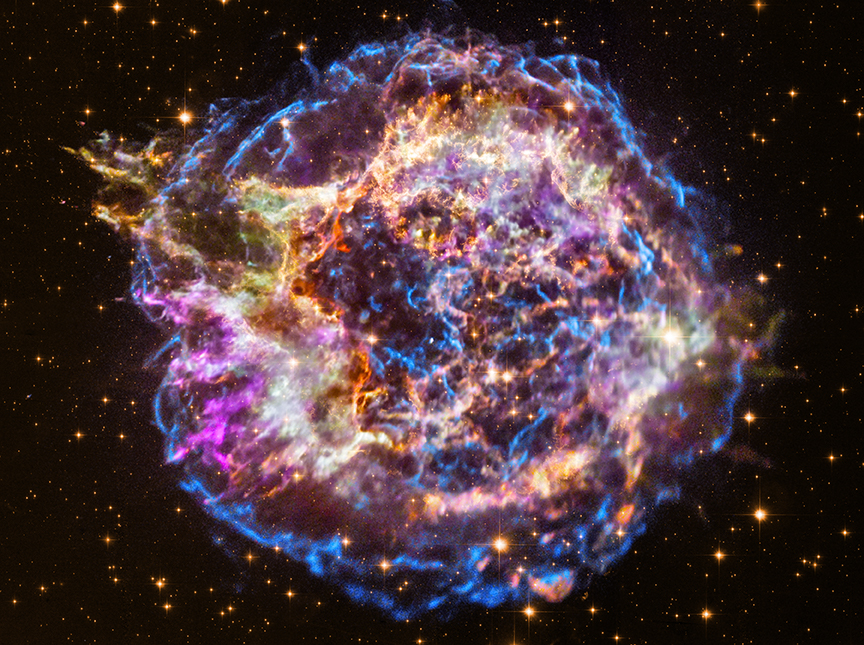
NASA’s Chandra X-ray Observatory has returned to the first target it imaged 20 years ago to collect an updated image. This glowing cloud is the remnant of a supernova which is believed to have exploded in the year 1680. When the Cassiopeia A star reached the end of its life and ran out of fuel, it collapsed to a dense core before exploding in an enormous outpouring of energy. This explosion generated shock waves that illuminated the stellar debris around it, making it glow particularly in the X-ray spectrum.
The X-ray spectrum is the wavelength that Chandra observes, and so Cassiopeia A glows brightly and colorfully in Chandra images. In the image above, the colorful cloud is an X-ray image, which has Hubble’s visible-light image of yellow stars imposed on top of it.
Cassiopeia A is somewhat famous for being the “first light” image of Chandra — that is, the first target chosen for the inauguration of the then-new telescope in 1999. Below, you can see that 20-year-old image and get an idea of how both the remnant and our ability to image it have developed over time.

We’ve also learned a lot about Cassiopeia A in the last 20 years. We now know, for example, that the gas in the outer shell of the remnant is incredibly hot, at 20 million degrees Fahrenheit, with filaments of cooler gas at 20,000 degrees Fahrenheit running through it. We also know that the blue edges of the remnant are expanding outward as a blast wave traveling at 11 million miles per hour, composed of shock waves which NASA describes as “similar to the sonic booms generated by a supersonic aircraft.” The particles in this area of shock waves are accelerated to tremendous energies, reaching twice as much energy as particles do in the Large Hadron Collider.
Previous work from Chandra has also revealed information about the composition of Cassiopeia A. We know it is composed of silicon (which appears red in the top image), sulfur (in yellow), calcium (in green), and iron (in purple). These elements produce different X-rays, which is how Chandra is able to differentiate them and show their distribution in the remnant in gorgeous color.
Editors' Recommendations
- Chandra investigates an X-ray mystery from epic kilonova
- This black hole is creating enormous glowing X-ray rings
- Listen to the sound of a nebula with the space data sonification project
- Astronomers discover hungry black hole that demands three square meals a day
- SpaceX wins contract to launch NASA’s new X-Ray observatory in 2021




